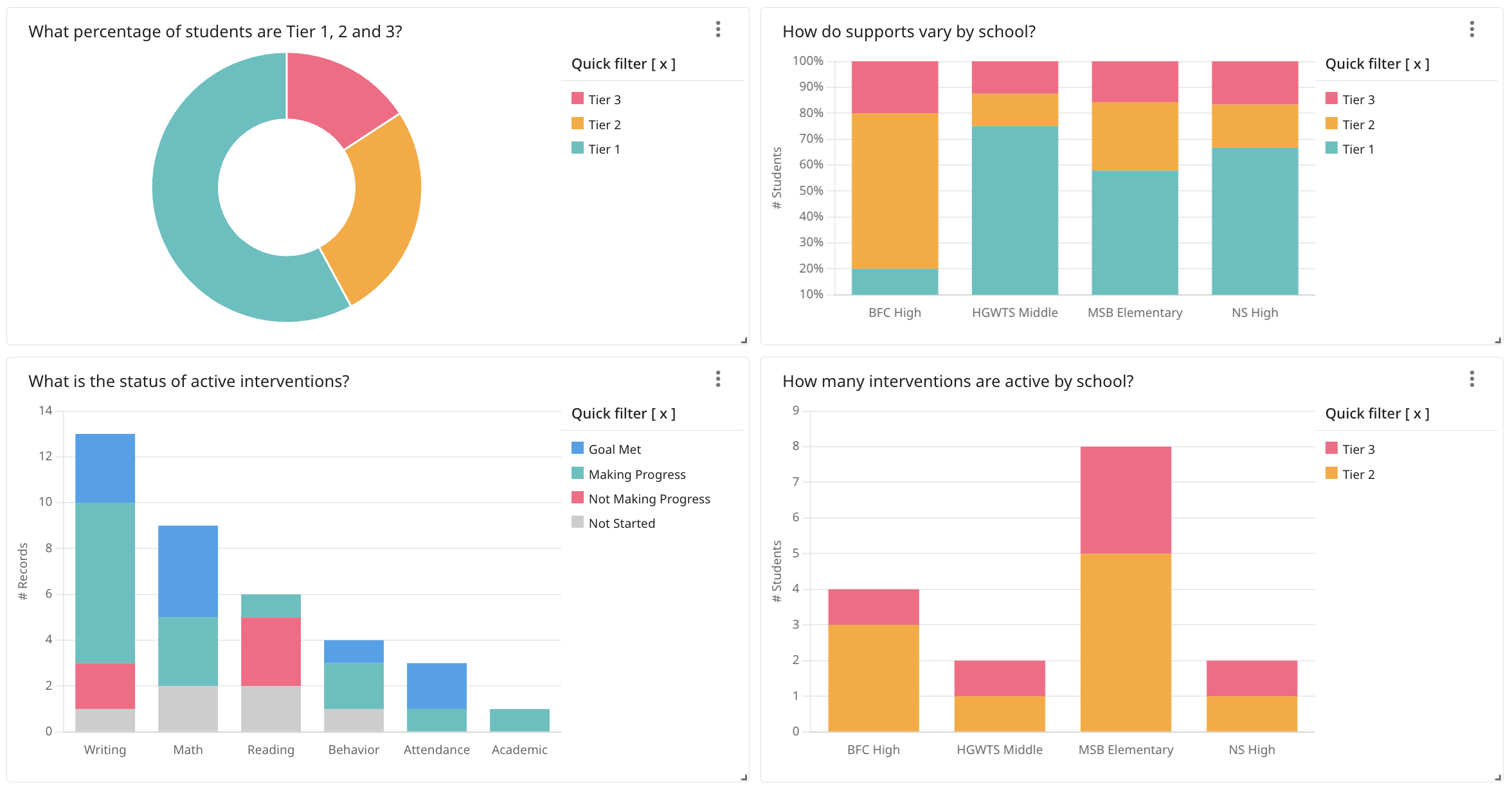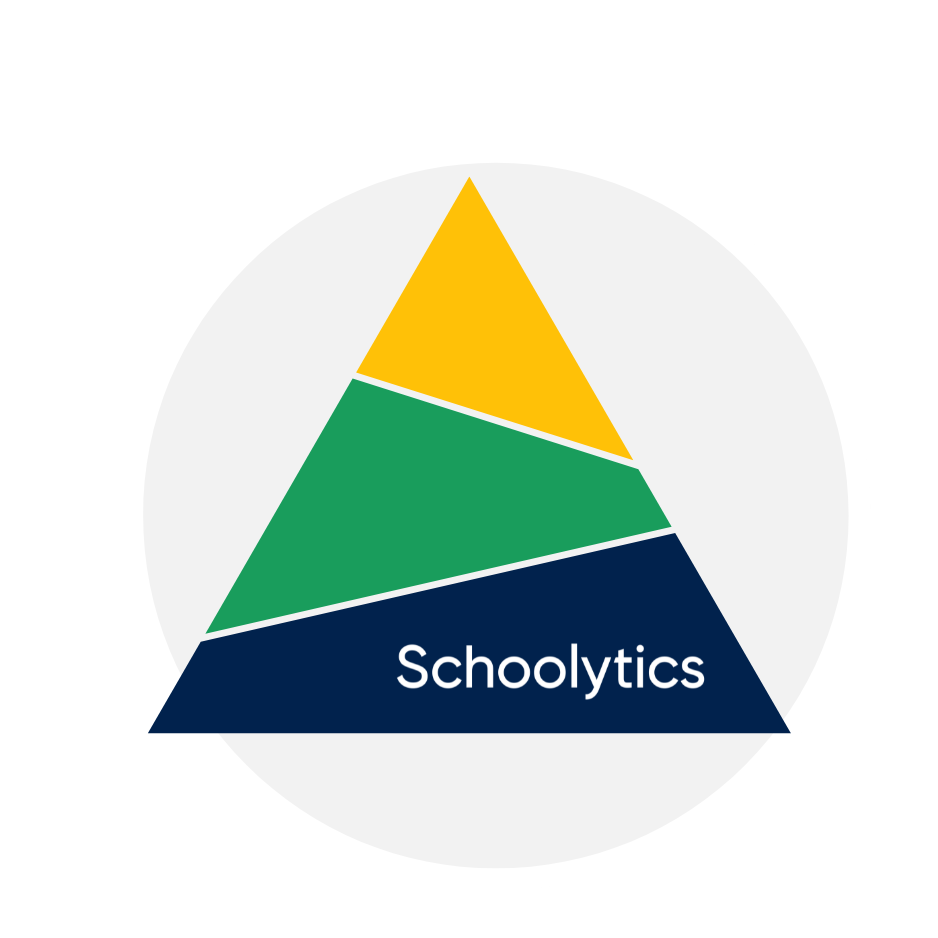The challenge:
Coordinating the complexity of MTSS
Implementing MTSS presents a coordination challenge for district leaders. The multidisciplinary MTSS team needs to access essential data that is stored in multiple systems, such as spreadsheets, forms, or behind restricted logins that not everyone can access.
When data is siloed, it can cause significant delays in accessing critical student information. This can result in inconsistent implementation across various sites and missed opportunities to respond promptly to situations that require additional support.
The solution:
MTSS workflows alongside a comprehensive student profile
Backed by comprehensive integrations and a fully managed data warehouse, Schoolytics empowers K-12 districts to build multidimensional student profiles at scale.
A student's comprehensive profile reflects attendance, assessments, grades, behavior, and interventions that grows each year, resulting in a unified view of support plan from early childhood through graduation.
District views of intervention progress
Across the district, leaders can see which students are participating in which interventions and how those interventions are affecting student outcomes over time.

Forms to match your process
Align student referrals, intervention documentation, and student outcomes to address changing student needs over time. Promote a comprehensive approach to student support and measurement.





Leading districts rely on Schoolytics to make data-informed decisions

“Moving forward with Schoolytics has been a positive experience because we did not have to change our process to meet the platform. Schoolytics is working with us to make the platform support our process.”
Dr. Jack Rein
District MTSS Director
Cicero D99

Before Schoolytics...we couldn't find a partner that could keep up with how fast things are moving. With Schoolytics, we built a customized dashboard that properly suits our needs.
Jerry Burris
District Technology Resource Teacher
Solon City Schools
Why Districts Choose Schoolytics
Our MTSS tools simplify the complexity of providing whole-student support across the district.
Customizable
Start from our library of reports, and we will tune your forms to fit your district's unique approach to MTSS.
Real-time
Don't wait for your data. Give all stakeholders real-time access to student services information so they can collaborate from anywhere.
Connected
Our automated connectors that sync directly with your systems. No more manually uploading data.
Secure
Role-based permissions and the highest level of security protect sensitive student data throughout the referral, intervention, and longitudinal process.
Learn more about the data science that informs our approach to partnering with school districts

The Power of a Comprehensive Student Profile
In today’s education landscape, schools are expected to personalize learning, support every...
Courtney Monk
March 10, 2025





